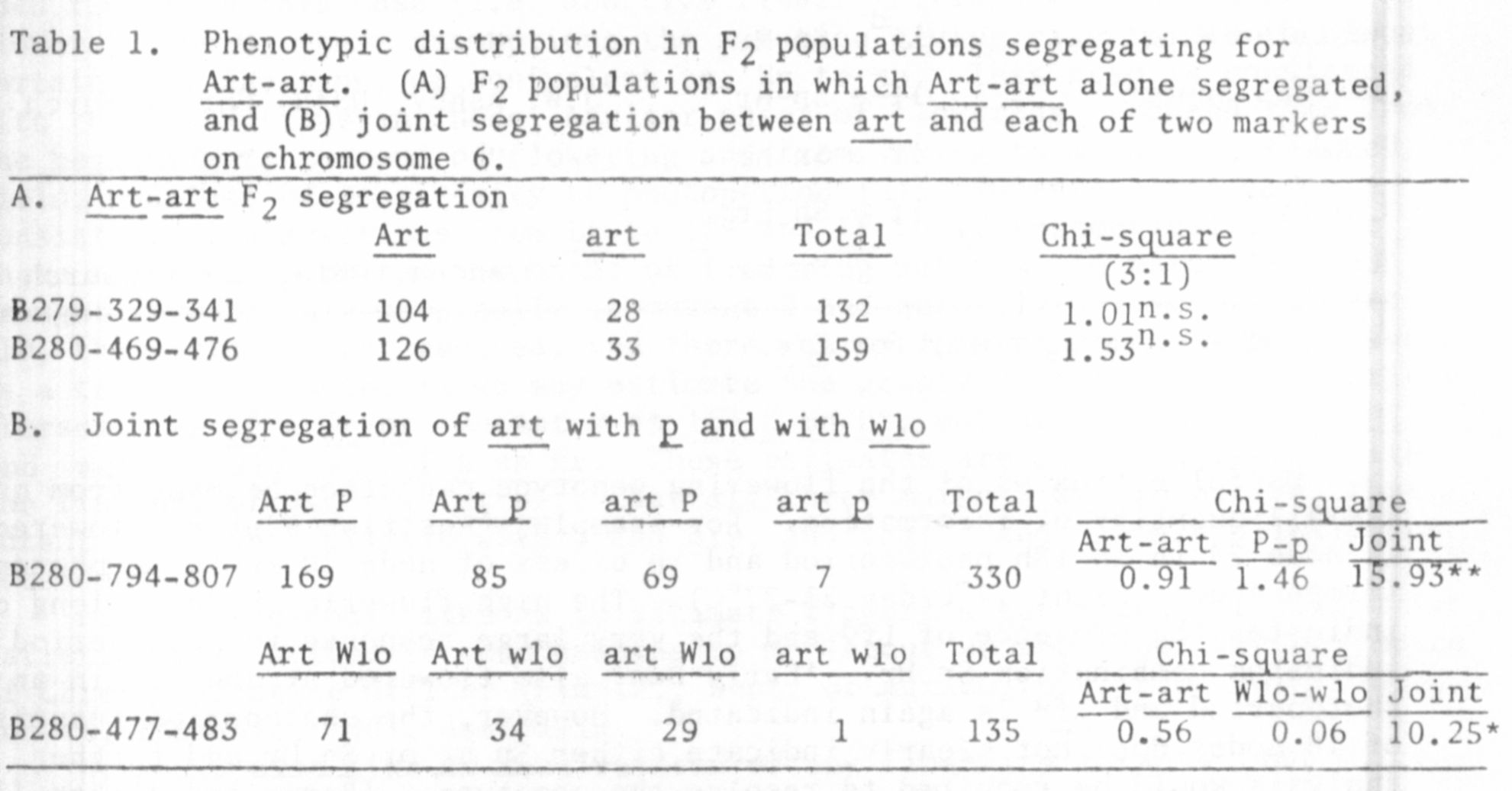38 RESEARCH REPORTS
PNL Volume 13
1981
ARTHRITIC (art): A NEW GENE ON CHROMOSOME 6
Marx, G. A. NYS Agricultural Experiment Station, Geneva, NY USA
In 1978, L. G. Cruger provided me with seeds of a spontaneous mutant
he had isolated in the early 60's from the cultivar 'Olympic'. In the seedling
stage, mutant plants (Fig. 1) bear some resemblance to plants carrying either
un or sil; leaflets and stipules are undulate and partially folded. These
phenotypic characteristics are very distinct in pure populations and suffi-
ciently distinct in segregating populations to make the mutant a suitable
seedling marker. Unlike un or sil, however, the upper internodes of adult
plants become foreshortened and, after the pods have developed, the plants
might mistakenly be regarded as fasciated because the pods are clustered at
the top. Perhaps, however, the most diagnostic feature of this mutant occurs
in the reproductive phase of development. The base of the peduncle becomes
swollen and the actual site of attachment to the stem is also more smoothly
rounded than in non-mutant plants (Fig. 2). The nodes that mark the union
between peduncle and pedicel appear to be abnormally enlarged as well. Thus,
the mutant plants can be discerned with comparative ease at virtually all
stages of the life cycle. The characteristic swollen joints prompts me to
suggest the name arthritic and the symbol art for this mutant.

Fig. 1. Normal seedling compared with seedling carrying arthritic (art)
mutant (right).
Crosses between art x normal plants bore F1's that were normal, and
segregation in F2 conformed to expectation (Table 1) based on monogenic
recessive inheritance. Table 1 (B) also shows evidence of linkage with
each of two markers, p and wlo, on chromosome 6.


